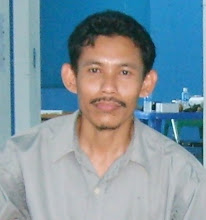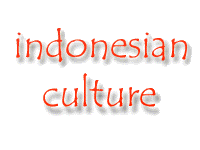
Wayang is a generic term denoting traditional theatre in
Indonesia. There is no evidence that wayang existed before
Hinduism came to
Southeast Asia sometime in the
first century CE. However, there very well may have been indigenous storytelling traditions that had a profound impact on the development of the traditional puppet theatre. The first record of a wayang performance is from an inscription dated 930 CE which says
"si Galigi mawayang," or "Sir Galigi played wayang". From that time till today it seems certain features of traditional puppet theatre have remained. Galigi was an itinerant performer who was requested to perform for a special royal occasion. At that event he performed a story about the hero Bima from the
Mahabharata.
Hinduism arrived in Indonesia from India even before the Christian era, and was slowly adopted as the local belief system. Sanskrit became the literary and court language of Java and later of Bali. The Hindus changed the Wayang (as did the Muslims, later) to spread their religion, mostly by stories from the Mahabharata or the Ramayana. Later this mixture of religion and wayang play was praised as harmony between Hinduism and traditional Indonesian culture. On Java, the western part of Sumatra and some smaller islands traditionalists continued to play the old stories for some time, but the influence of Hinduism prevailed and the traditional stories either fell into oblivion or were integrated into the Hinduistic plays.
The figures of the wayang are also present in the paintings of that time, for example, the roof murals of the courtroom in Klungkung, Bali. They are still present in traditional Balinese painting today.
When Islam began spreading in Indonesia, the display of God or gods in human form was prohibited, and thus this style of painting and shadow play was suppressed. King Raden Patah of Demak, Java, wanted to see the wayang in its traditional form, but failed to obtain permission from the Muslim religious leaders. As an alternative, the religious leaders converted the wayang golek into wayang purwa made from leather, and displayed only the shadow instead of the figures itself. Instead of the forbidden figures only their shadow picture was displayed, the birth of the wayang kulit.
The figures are painted, flat woodcarvings (a maximum of 5 to 15 mm thick -- barely half an inch) with movable arms. The head is solidly attached to the body. Wayang klitikcan be used to perform puppet plays either during the day or at night. This type of wayang is relatively rare.
Wayang today is both the most ancient and most popular form of puppet theatre in the world. Hundreds of people will stay up all night long to watch the superstar performers, dalang, who command extravagant fees and are international celebrities. Some of the most famous dalang in recent history are Ki Nartosabdho, Ki Anom Suroto, Ki Asep Sunarya, Ki Sugino, and Ki Manteb Sudarsono.
Wayang kulit, shadow puppets prevalent in Java and Bali in Indonesia, and Kelantan in Malaysia, are without a doubt the best known of the Indonesian wayang. Kulit means skin, and refers to the leather construction of the puppets that are carefully chiseled with very fine tools and supported with carefully shaped buffalo horn handles and control rods.
The stories are usually drawn from the Ramayana, the Mahabharata or the Serat Menak. The island of Lombok has developed its own style of Serat Menak called "kazangiloonga".
There is a family of characters in Javanese wayang called Punakawan; they are sometimes referred to as "clown-servants" because they normally are associated with the story's hero, and provide humorous and philosophical interludes. Semar is the father of Gareng (oldest son), Petruk, and Bagong (youngest son). These characters did not originate in the Hindu epics, but were added later, possibly to introduce mystical aspects of Islam into the Hindu-Javanese stories. They provide something akin to a political cabaret, dealing with gossip and contemporary affairs.
The puppets figures themselves vary from place to place. In Central Java the city of Surakarta (Solo) is most famous and is the most commonly imitated style of puppets. Regional styles of shadow puppets can also be found in West Java, Banyumas, Cirebon, Semarang, and East Java. Bali produces more compact and naturalistic figures, and Lombok has figures representing real people. Often modern-world objects as bicycles, automobiles, airplanes and ships will be added for comic effect, but for the most part the traditional puppet designs have changed little in the last 300 years.
Historically, the performance consisted of shadows cast on a cotton screen and an oil lamp. Today, the source of light used in wayang performance in Java is most often a halogen electric light. Some modern forms of wayang such as Wayang Sandosa created in the Art Academy at Surakarta (STSI) has employed spotlights, colored lights and other innovations.
The handwork involved in making a wayang kulit figure that is suitable for a performance takes several weeks, with the artists working together in groups. They start from master models (typically on paper) which are traced out onto kulit (skin or parchment), providing the figures with an outline and with indications of any holes that will need to be cut (such as for the mouth or eyes). The figures are then smoothed, usually with a glass bottle, and primed. The structure is inspected and eventually the details are worked through. A further smoothing follows before individual painting, which is undertaken by yet another craftsman. Finally, the movable parts (upper arms, lower arms with hands and the associated sticks for manipulation) mounted on the body, which has a central staff by which it is held. A crew makes up to ten figures at a time, typically completing that number over the course of a week.
The painting of less expensive puppets is handled expediently with a spray technique, using templates, and with a different person handling each color. Less expensive puppets, often sold to children during performances, are sometimes made on cardboard instead of leather.(Wikipedia)
 The Kolintang music instrument originated from Minahasa. It is similar to a wooden xylophone and is popular nationwide. One version of local folklore states that the name Kolintang came from its sounds: TING (high pitch note), TANG (moderate pitch note) and TONG (low pitch note). In the local language, the invitation "Let us do some TING TANG TONG" is: "mangemo kumolintang", hence the name of the instrument, Kolintang.
The Kolintang music instrument originated from Minahasa. It is similar to a wooden xylophone and is popular nationwide. One version of local folklore states that the name Kolintang came from its sounds: TING (high pitch note), TANG (moderate pitch note) and TONG (low pitch note). In the local language, the invitation "Let us do some TING TANG TONG" is: "mangemo kumolintang", hence the name of the instrument, Kolintang.











![---::[Kemayuku]::---](http://i307.photobucket.com/albums/nn310/ongoz/lr7.gif)











